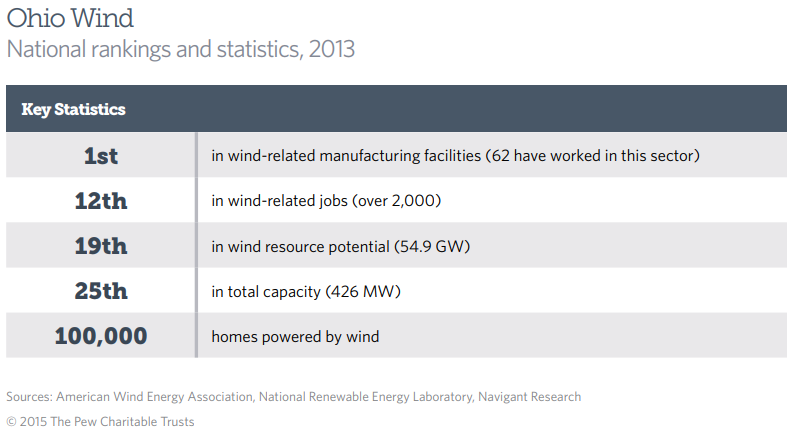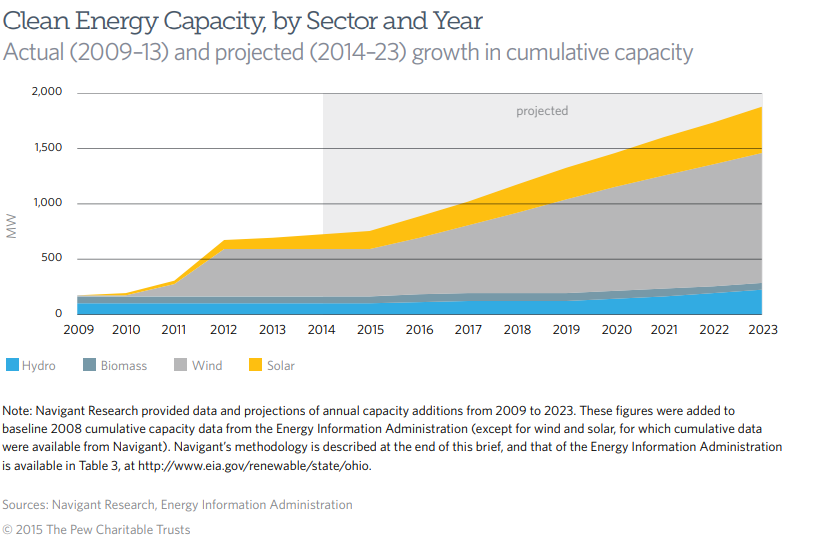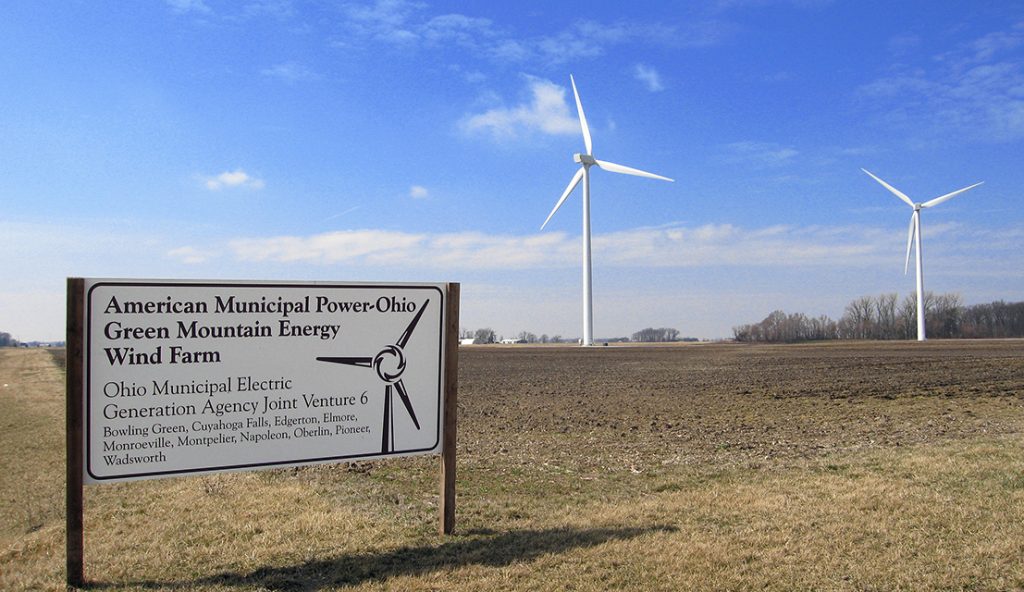We have looked at different job growth strategies in past blogs, from making policies that support small businesses to focusing on workforce development to shrink the skills gap. This week we explore another potential job growth strategy: Ohio’s role in the Green Economy, and particularly in the wind industry. As many states beginning to pursue a green jobs strategy, it becomes imperative for each to pursue an optimal strategy that is specifically tailored to their unique resources.
How does Ohio generate electricity?
In Ohio, electricity is mainly generated using coal, natural gas and nuclear power. (The exact breakdown is 54% from coal, 32% from natural gas, 11% from Nuclear, and 3% from various renewables). However, when investigating these trends over time, one can see a small shift starting to occur. From 2010 to 2015, coal generation in Ohio declined at an average rate of 9.5% per year, while oil & gas, solar, and wind generation grew at rates of 28%, 34%, and 149% per year, respectively.
There are a number of factors influencing this shift, but, regardless, organizations such as electric utilities have taken notice and are planning for the future accordingly by investing dollars into other generation technologies. For instance, in September, AEP Ohio, the state’s largest investor-owned electric utility, announced plans to phase out 1,500 MW of production from three coal-burning units located in their Conesville and Cardinal plants, with total retirement occurring by 2030. They have also announced a plan to install 400 MW of solar energy capacity in the state over the next few years, with the Appalachian region as a site preference for these installations.
But what does this mean for jobs?
Well, according to Pew Charitable Trusts, Ohio actually currently ranks 6th in the country for the percentage of jobs that are classified as green. According to the Ohio Economic Development Association, there’s been an upwards slope in employment metrics in the solar and wind industries. Coal jobs, conversely, have been steadily declining at a rate of 17% per year from 2013 to 2016. In 2016, 2,349 people worked in the coal industry in Ohio, while there were 2,589 in wind and 5,831 jobs in solar – so nearly four times the amount of people working directly in the wind and solar industries than coal. The wind and solar industries in Ohio, taken together, contribute well over $5 billion dollars to the state’s economy, which actually outpaces the coal industry and even the state’s large oil & gas industry during the recent fracking boom.
Wind Industry in Ohio
Ohio’s clean energy sector is dominated by wind power. In fact, according to the American Wind Energy Association, “Ohio is a national leader in wind-related manufacturing, with more facilities producing products for the wind industry than any other state in the country.”

Ohio leading in wind-related manufacturing makes sense when you think about the state’s rich manufacturing history. Steve Peplin, CEO of Talan Products in Cleveland, says Northeast Ohio is definitely well positioned to manufacture and compete in the renewable space:
“We have the infrastructure; we had until recently low-cost industrial space—it’s still low-cost compared to California or the East Coast; a history and a heritage of manufacturing, so we have the infrastructure, steel mills located here; and we have a great labor force,” he says.
Ohio also has another leg up for becoming a hub for future development in the wind energy sector since its coastline is on Lake Erie, creating opportunities for offshore wind development and for shipping products throughout the Great Lakes region.
Ohio has clearly already leveraged its infrastructure to become the nationwide leader in wind-related manufacturing. The materials produced in Ohio include blades, towers, steel, and fiberglass. The pros of manufacturing things directly related to the wind industry is that unlike many other products, turbine blades produced in the United States are less expensive than those made in China and Germany, according to a 2013 study by the Global Wind Network. In addition, U.S.-made towers are always going to be more cost-effective for domestic wind projects, because purchasing these materials from a source near the installation site significantly reduces transportation costs and avoids import tariffs.
Despite its leadership in wind-related manufacturing, Ohio lags in installed wind capacity. The state has wind resources to support 55 GW of wind power capacity, enough to meet nearly all of the state’s current electricity demand. However, it has developed less than 1 percent of this amount, 426 MW—ranking 25th in the nation.

According to Navigant Research, wind power installations in Ohio attracted $755 million from 2009 to 2013 and are projected to add $1.2 billion between 2014 and 2023. However, an uncertain policy future could lead to a drop in this amount, jeopardizing Ohio’s leadership in the clean energy sector. Conversely, if Ohio takes the initiative to fully harness its wind resources, it could attract more private capital, create new businesses and jobs, and generate additional demand for its manufacturing capabilities.
Further Reading: Gov. Kasich Vetoes Continued Freeze on Ohio Clean Energy Mandates and Ohio’s most recent Alternative Energy Portfolio Standard.





